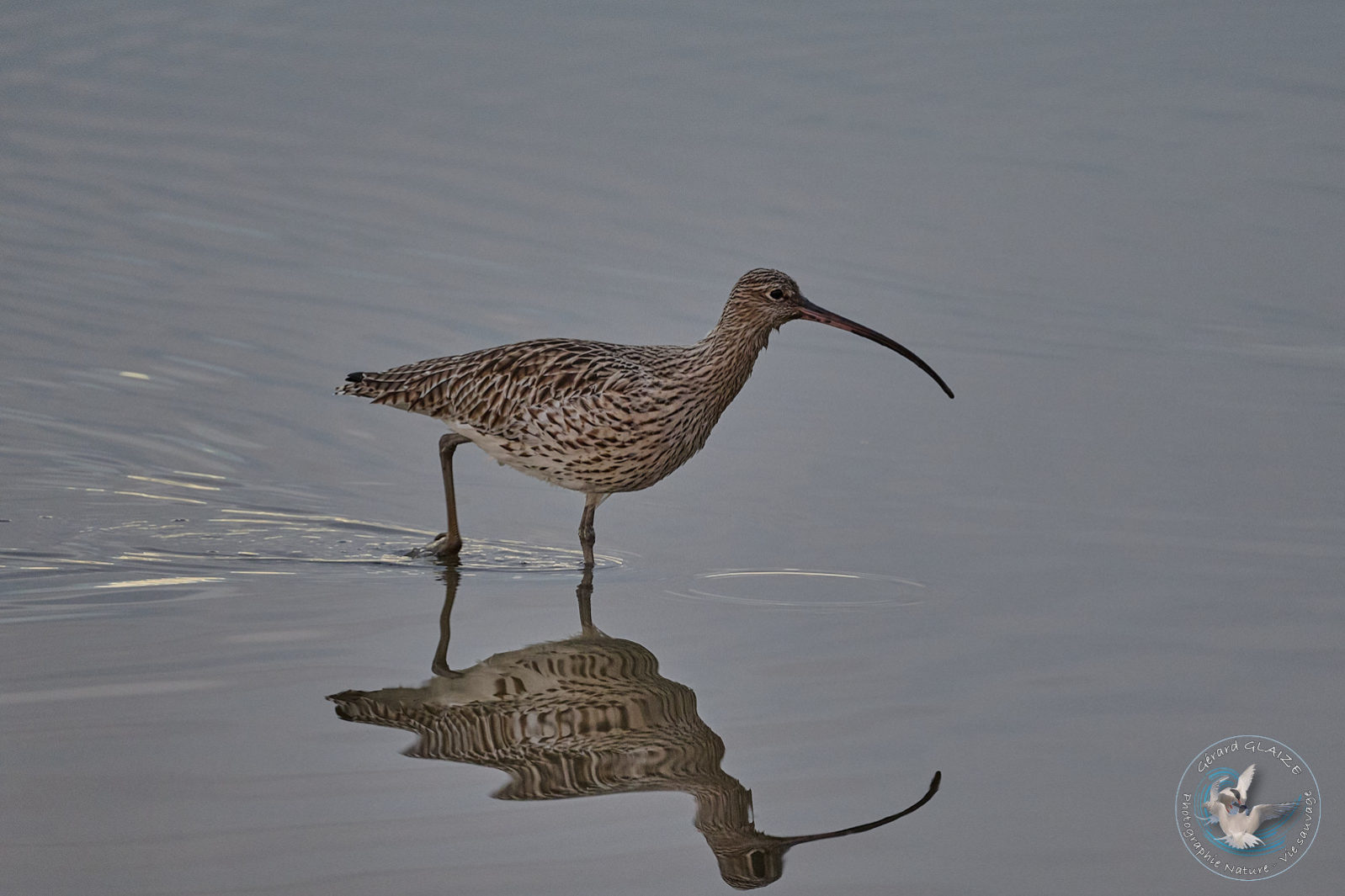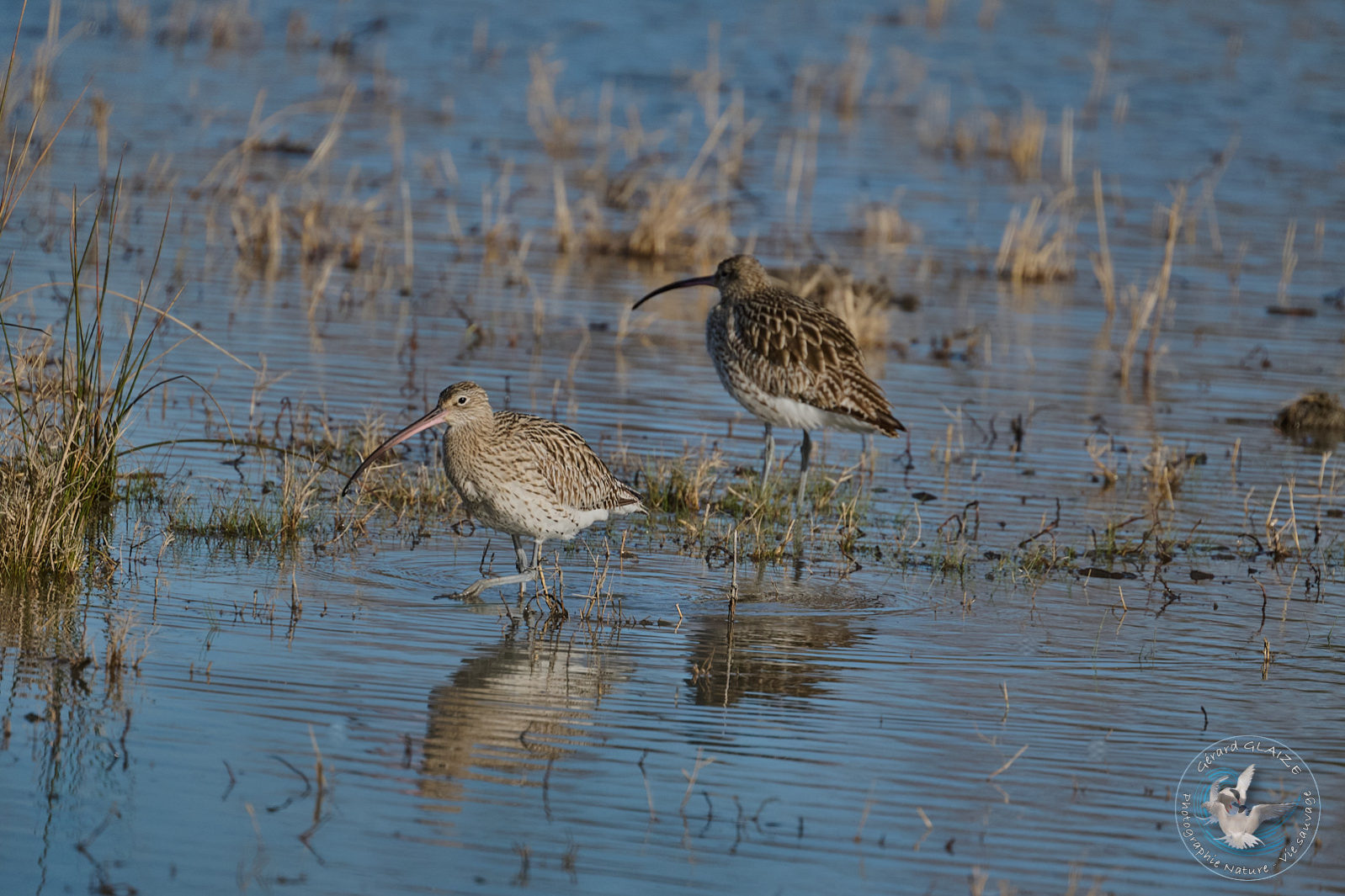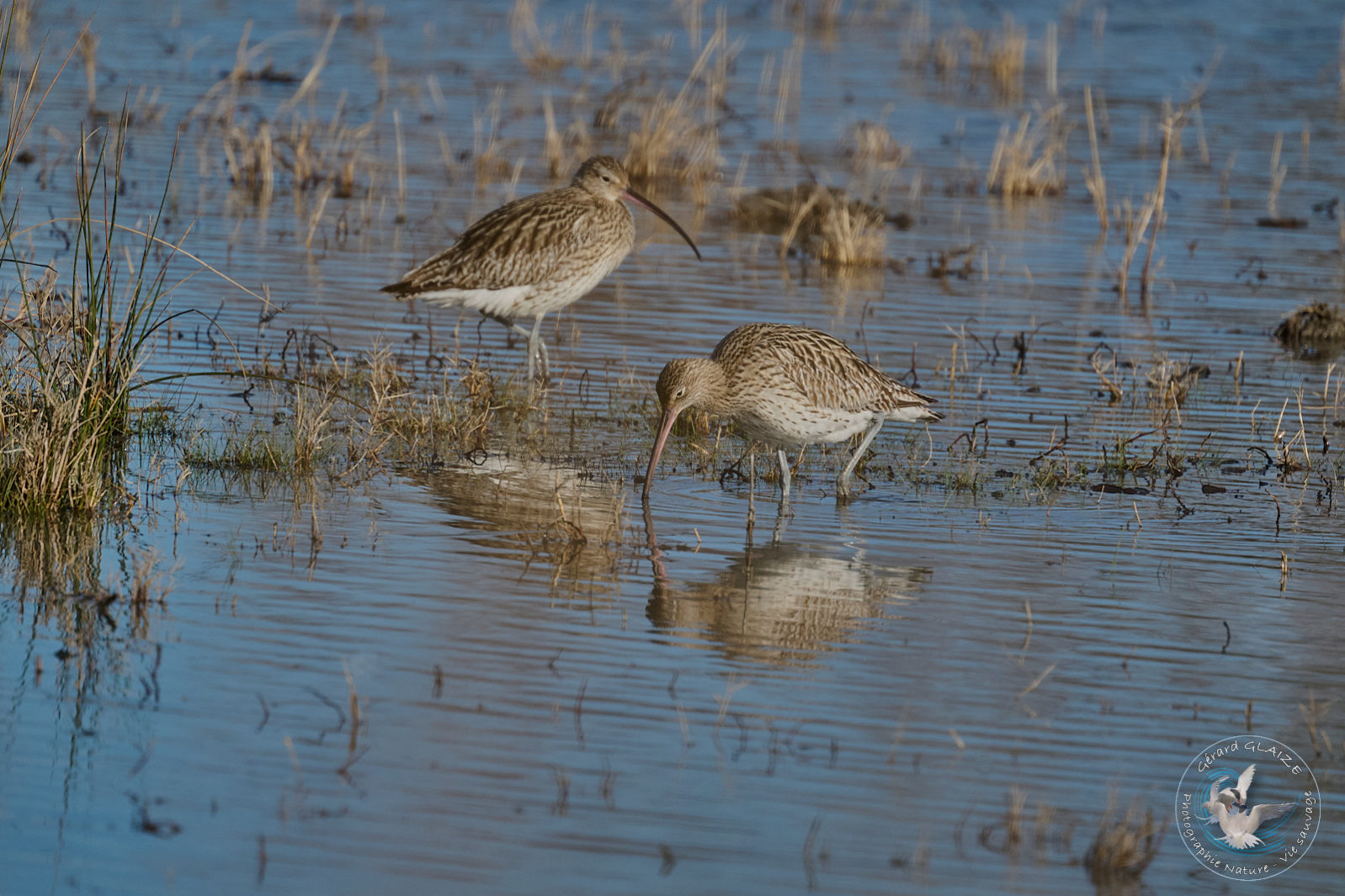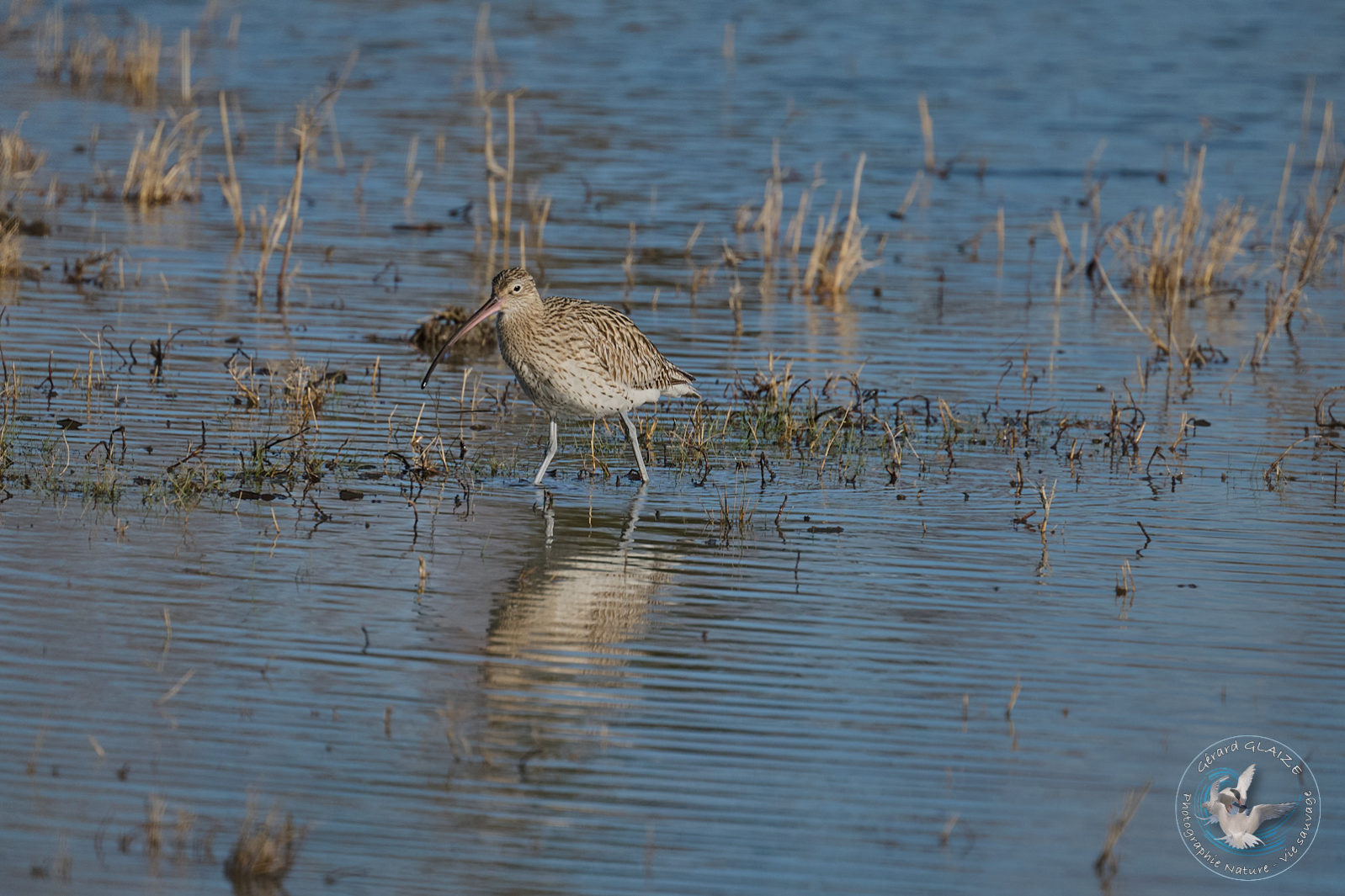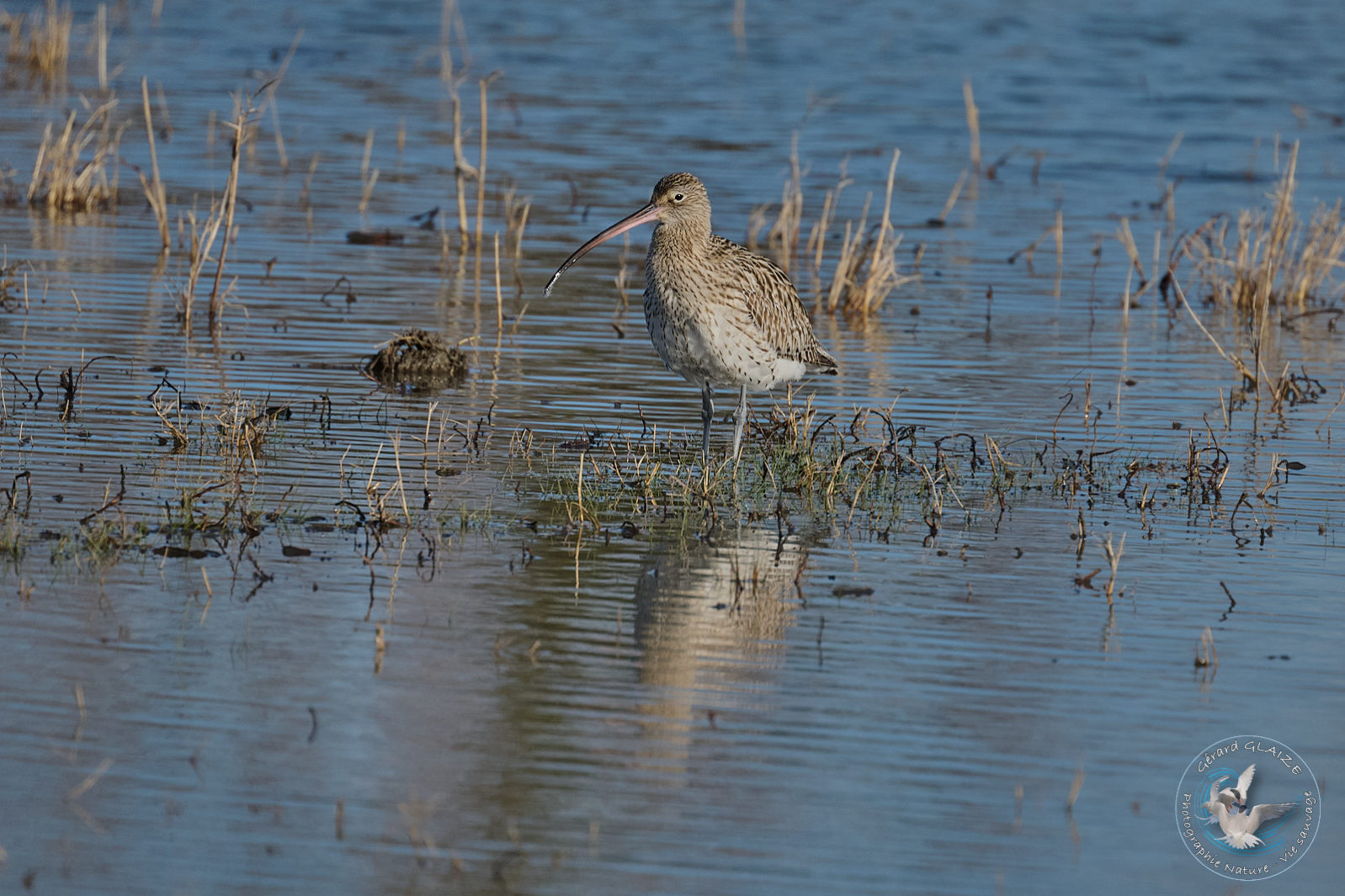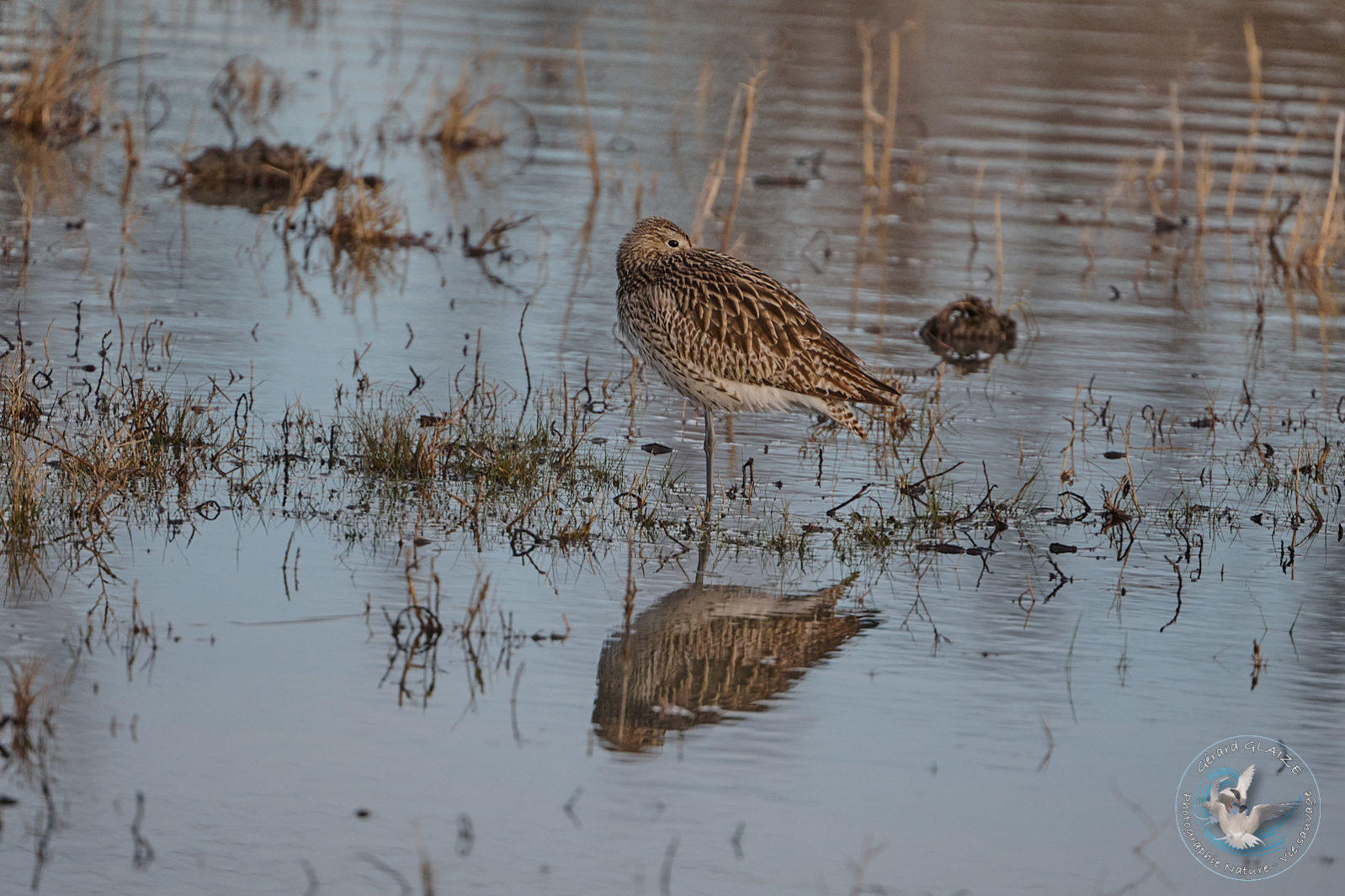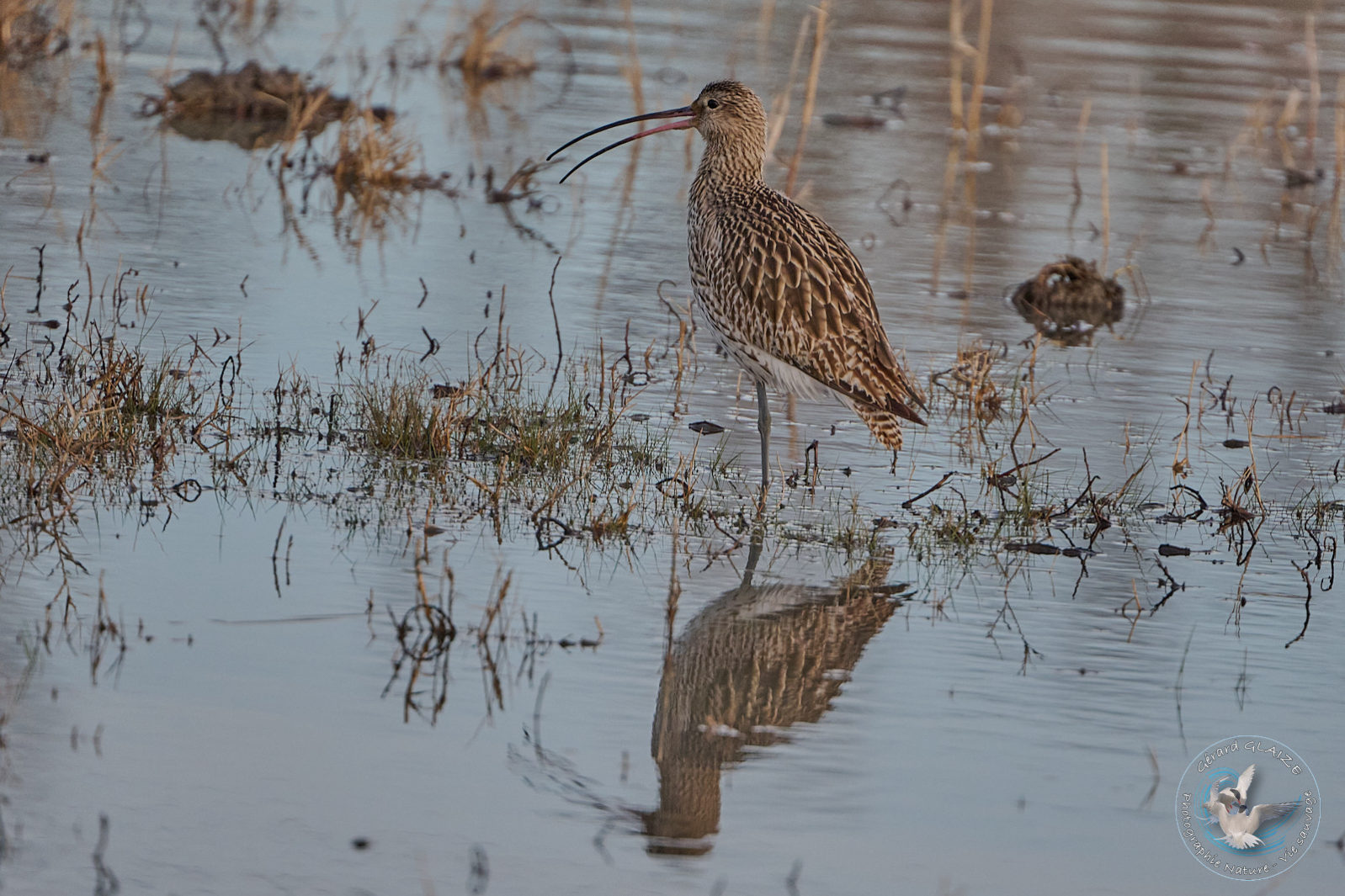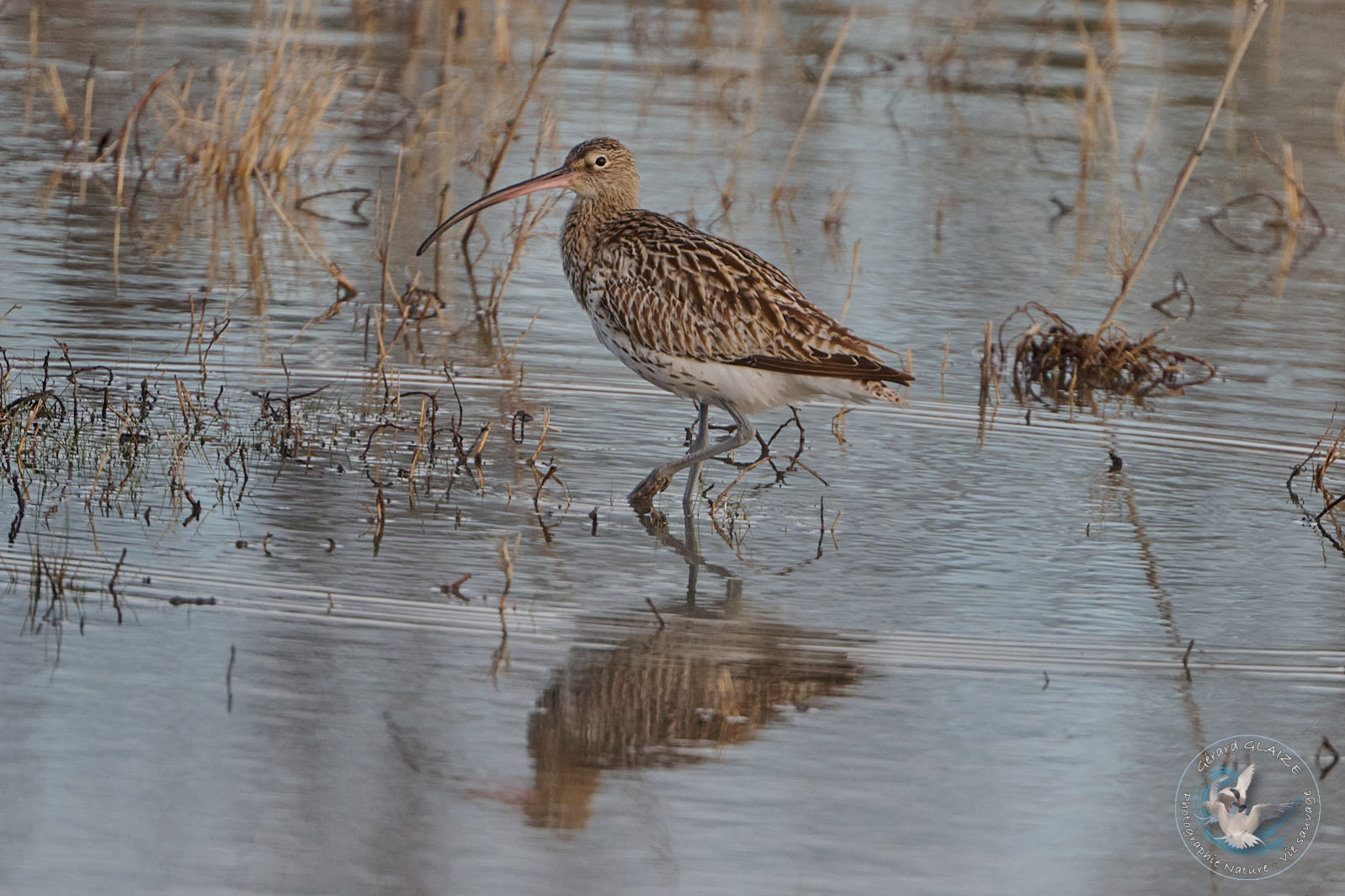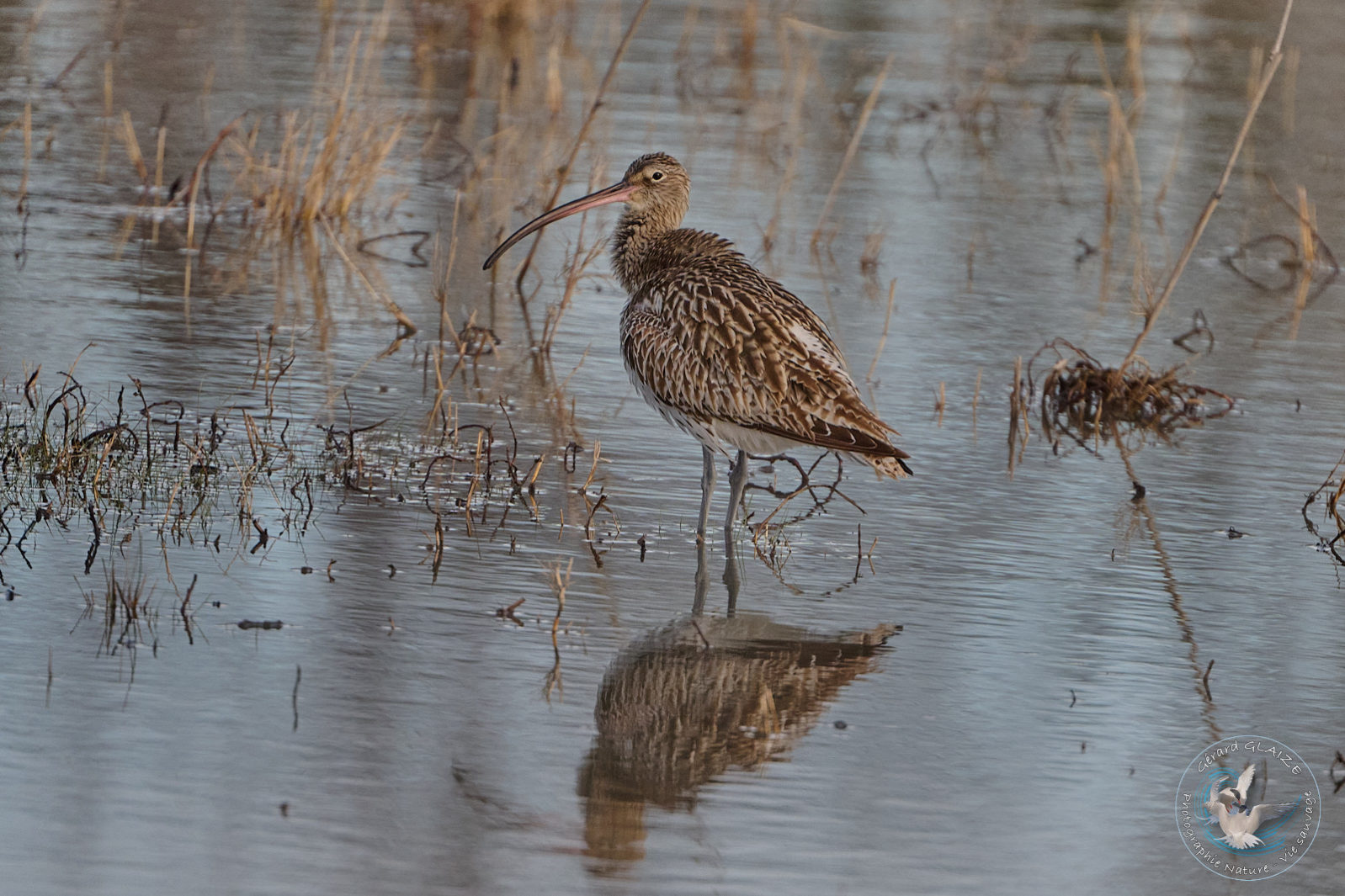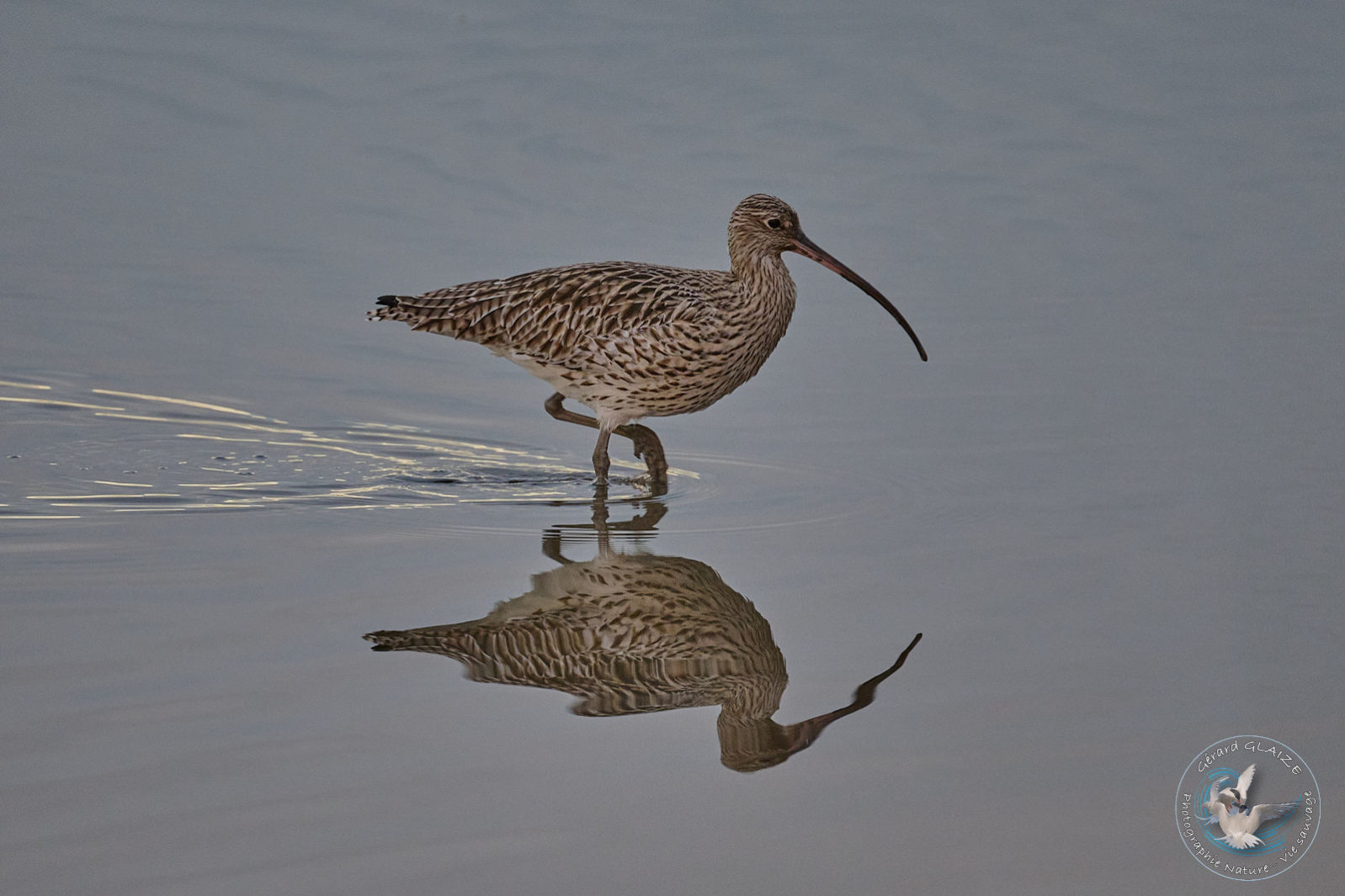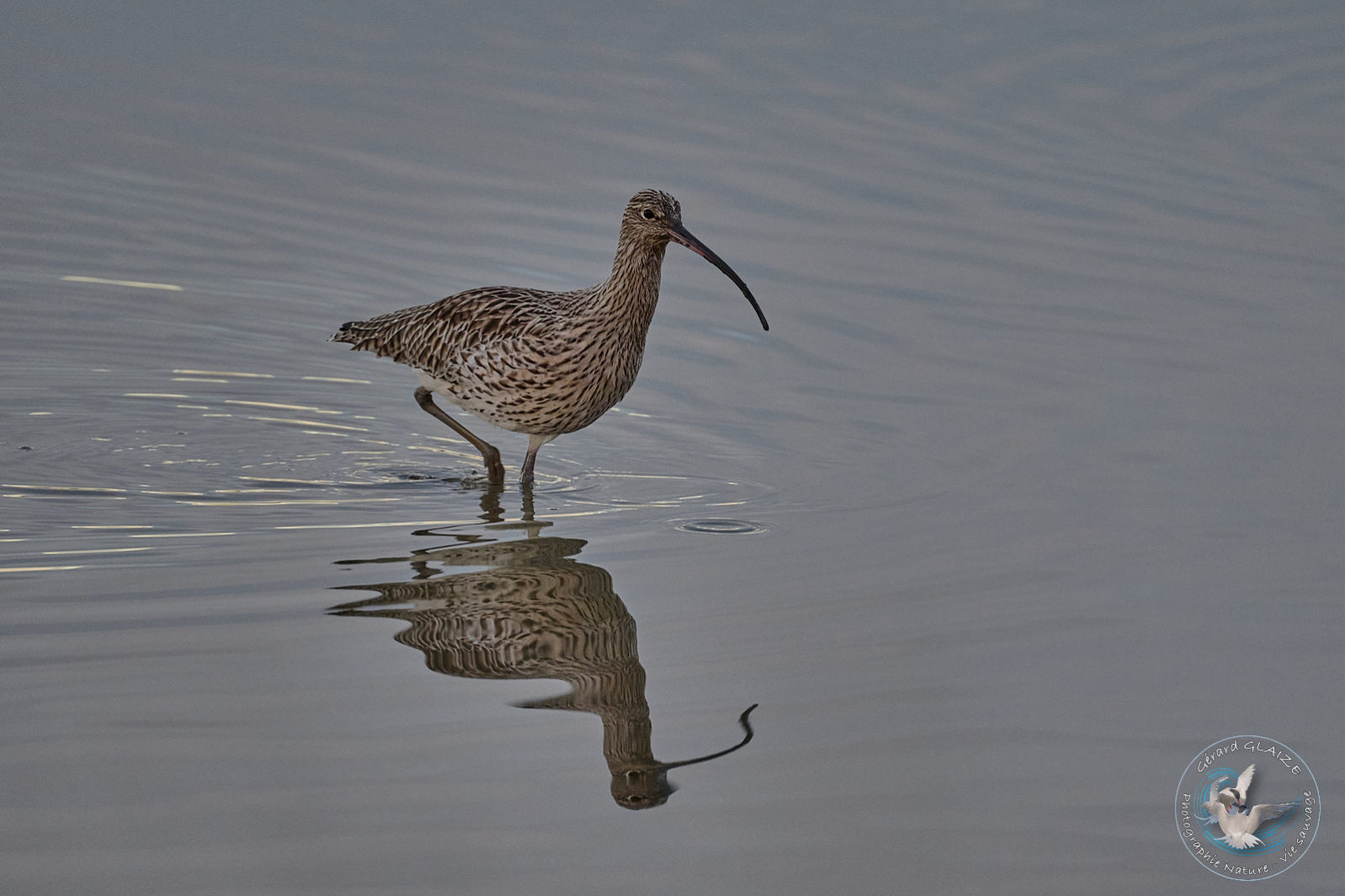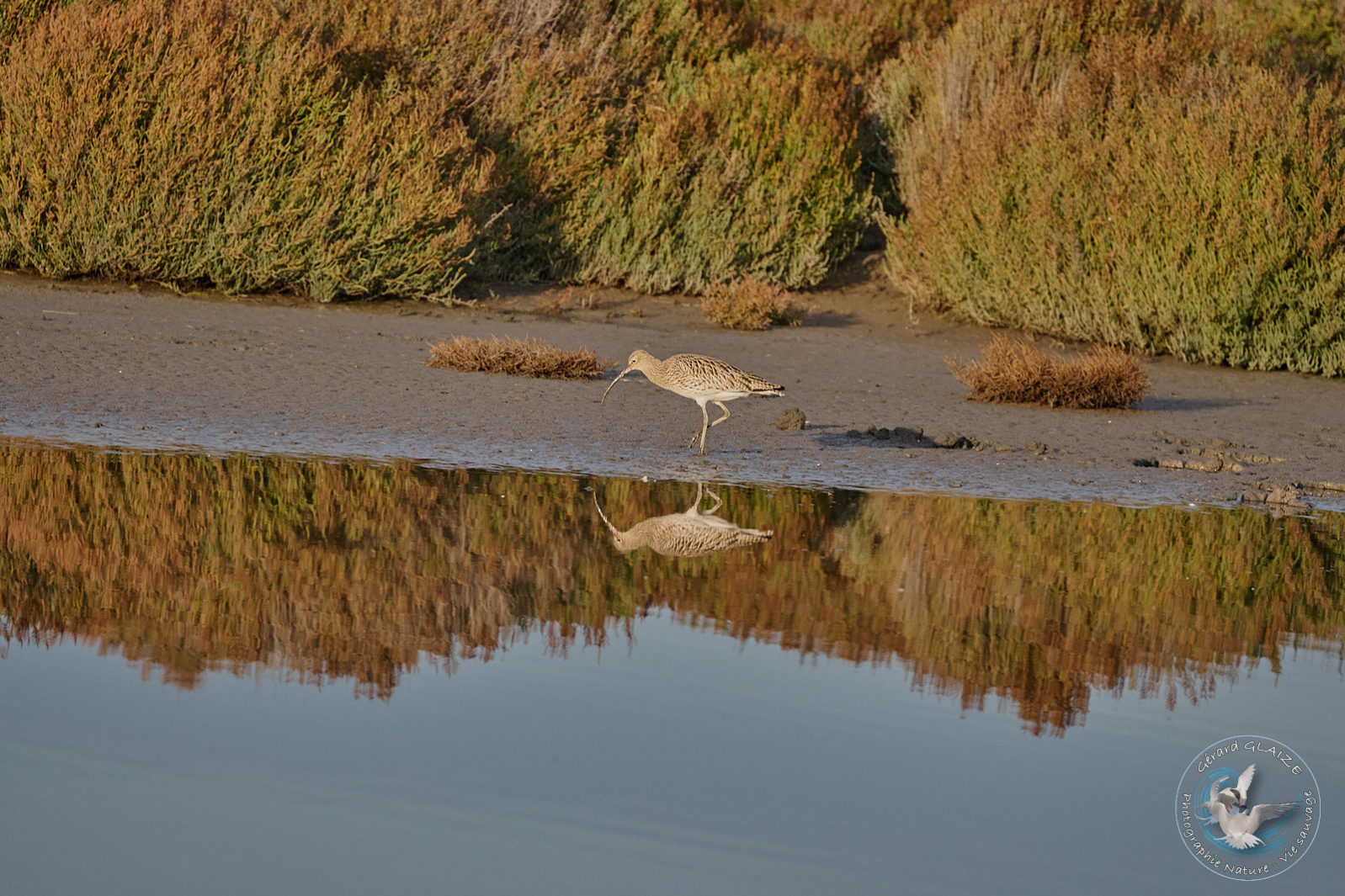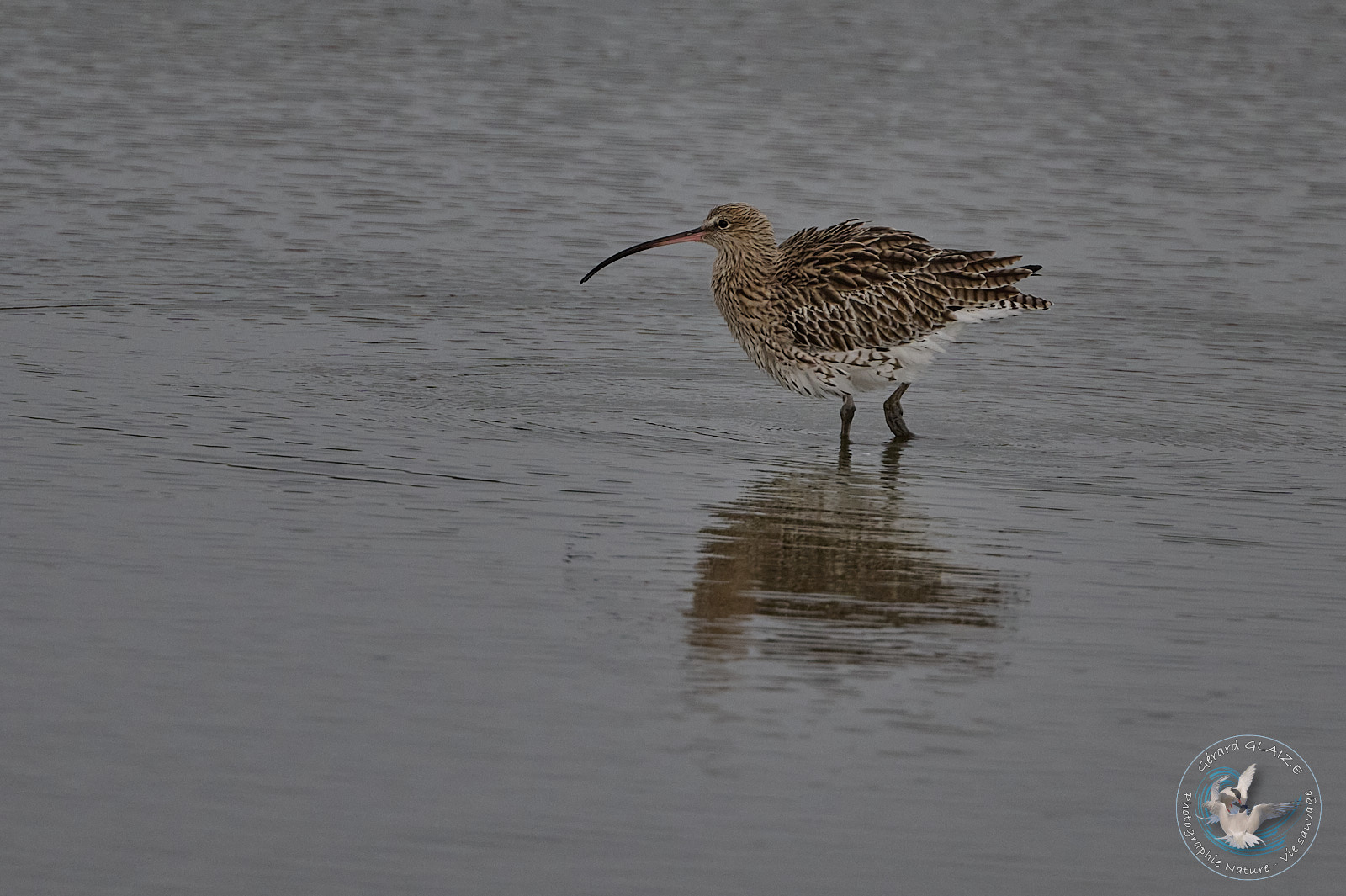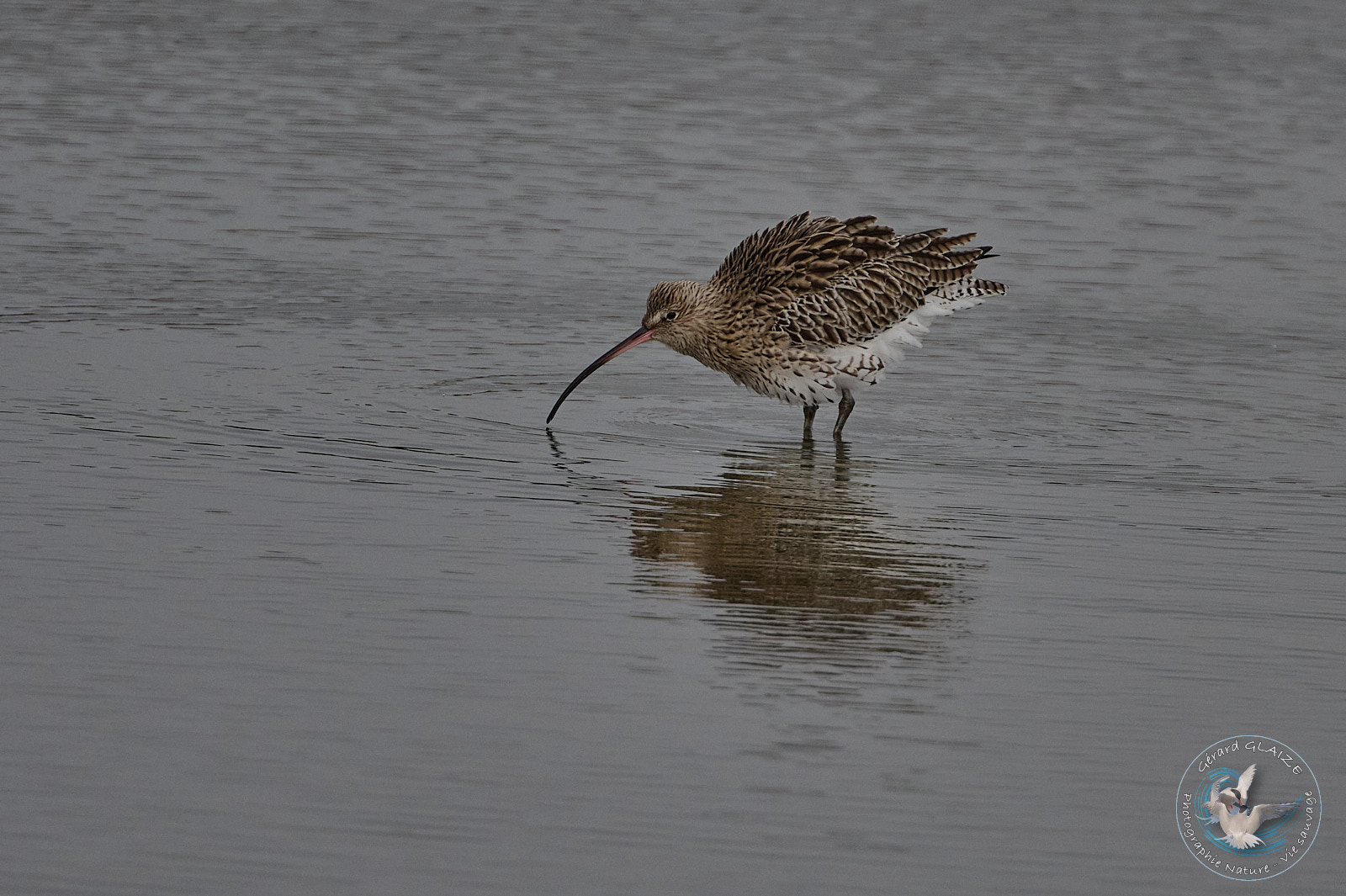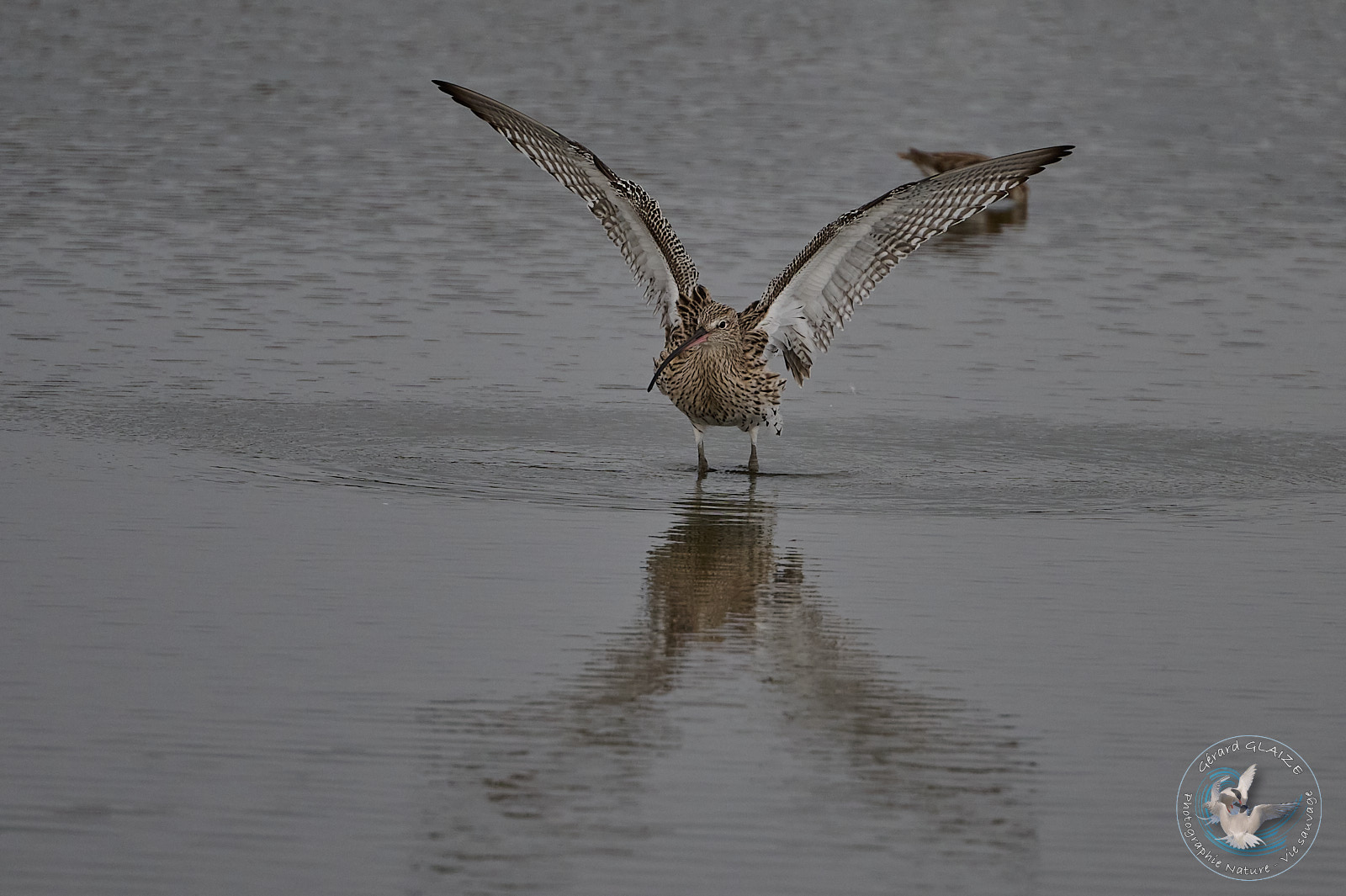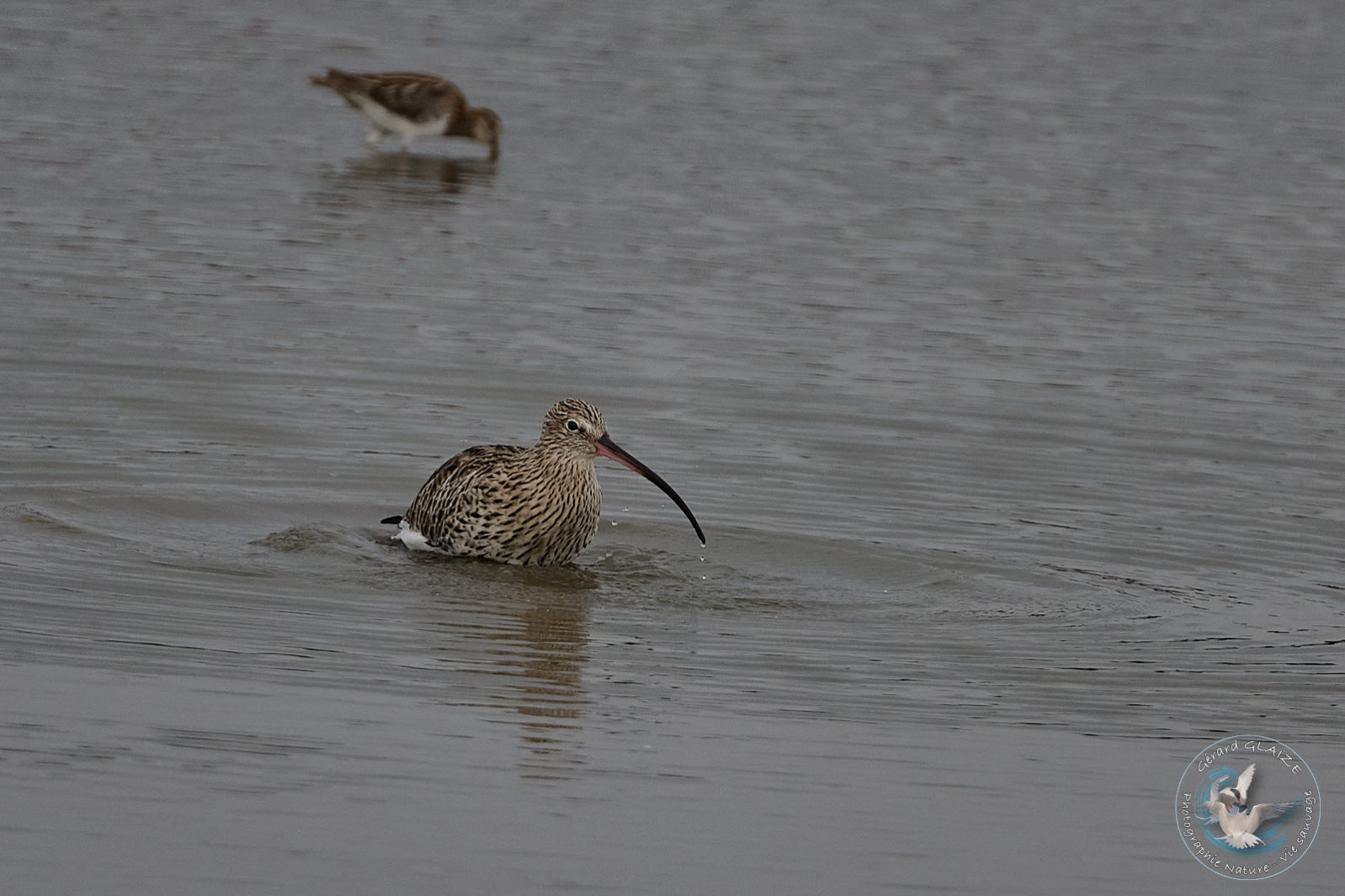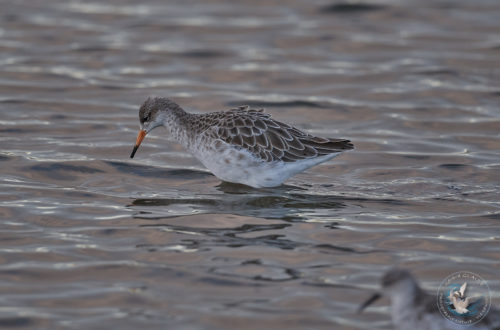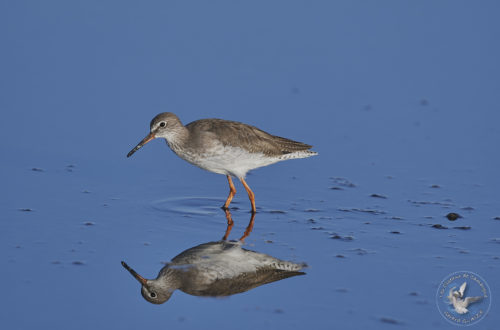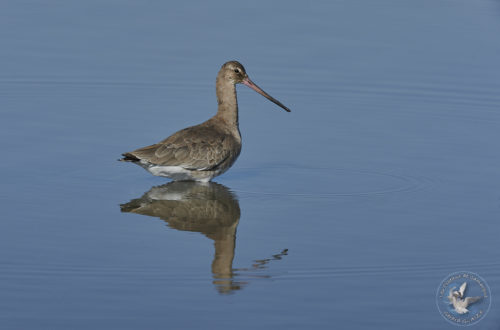Eurasian Curlew
The Eurasian Curlew is a species of wader belonging to the large family Scolopacidae. On the other hand, it is the largest European shorebird of its kind. Its long legs are grey-blue, and end in 4 fingers. The plumage is speckled and streaked with gray, red, brown, tawny and white. The white rump is clearly visible in flight, its beak is very long and curved. However, it is quite timid and suspicious, always on guard, it is a migratory species. The Eurasian Curlew has an essentially coastal winter distribution in France. Its magnificent, fluted trill resounds in flight, summer and winter, so its song is the origin of its name.
Eurasian Curlew
Scientific name : Numenius arquata
Family : Scolopacidae
Length: from 50 cm to 57 cm – Wingspan: from 89 cm to 105 cm
Weight : from 475 gr to 1.360 gr
IUCN Conservation Status: NT
Flight
The flight of the Eurasian Curlew is direct and rapid, with regular and sustained beats of the fairly long and arched triangular wings, well adapted to the long-distance flights of this migratory bird. It also uses gliding, when landing or during parade flights.
Habitat
The Eurasian Curlew is a bird of very open and most often humid environments. It is therefore found in marshes, peat bogs, meadows, heaths, coastal marshes, agricultural areas and lakes.
Regime – Diet
The Eurasian Curlew feeds openly in silt and mudflats. Its long, downward-arching beak probes deeply into the mud. It is therefore particularly suitable for capturing worms and molluscs. At the end, cells very sensitive to touch allow it to locate its prey. It sometimes feeds on berries and seeds and occasionally on cereals, but also on crustaceans and shrimp. In the meadows where it nests, the curlew consumes a lot of insects and earthworms.
Nesting
In France, the Eurasian Curlew nests in the northern half of the country (less than 1500 pairs). The Eurasian Curlew, on the other hand, nests in grassy meadows, preferably low in height, which allows it to have perfect visual coverage of its territory. Nesting takes place from March to August, the female lays 3 to 5 beige eggs which she will incubate alternately with the male for 27 to 29 days. Precocial chicks feed on their own after just a few days but will not fledge until 32 to 38 days. Rather, it is the male who takes care of the chicks.
Protection
The species is in decline throughout the world, for reasons that still seem incompletely understood. But in addition to the fragmentation and regression or degradation of its habitats (retreat of grasslands and degradation of wetlands), studies have shown that it could be a victim of avian lead poisoning following the ingestion of lead shot (shot which also contains lead arsenic). In some of its habitats, disturbance could also be a cause.
Following a moratorium until 2018, the species is exempt from hunting on breeding grounds, but not on migration routes or wintering (it can be hunted on the Maritime Public Domain, in France) . Due to the negative evolution of its status, its hunting should therefore be prohibited at all times and everywhere.
The species is therefore vulnerable in France, and almost threatened in Europe.
Song
The usual calls take the form of loud, full “tlu-ih” or “cour-li”, or even hoarse “cou-cou-kiou” and slow, prolonged, repeated “cou-cour-li”. The name “curlew” comes from the usual call of the species. Song of this bird, emitted during the parade flight, is sonorous and spectacular. It begins with a series of powerful and prolonged “couis”, then moves to a succession of rolling notes which can go as far as a trill at the end of the emission.


